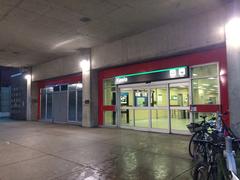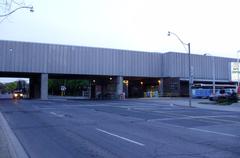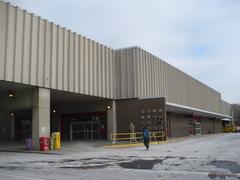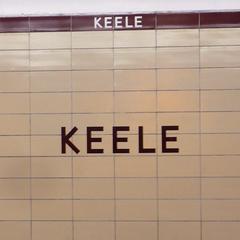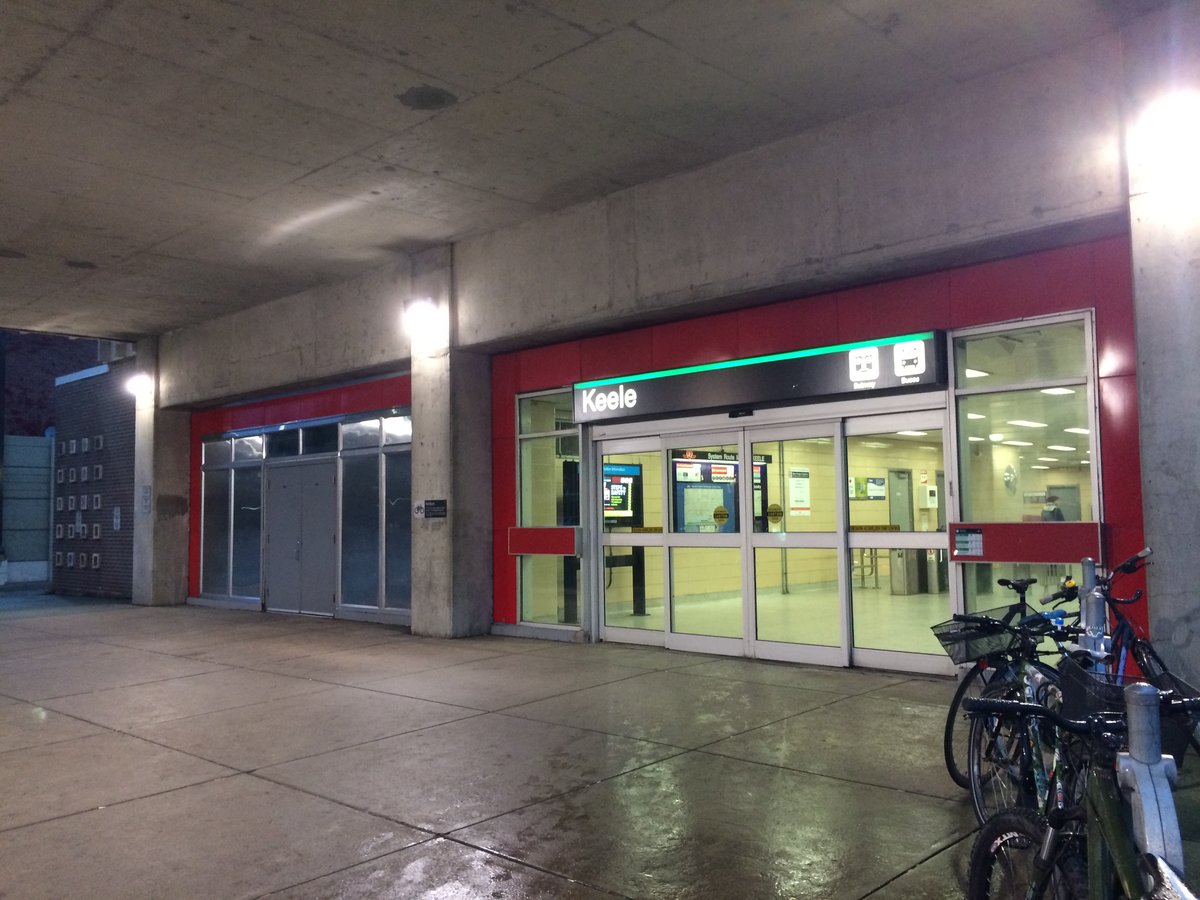
Keele Toronto Canada Visiting Hours, Tickets, and Historical Sites Guide
Date: 15/06/2025
Introduction to Keele, Toronto: History and Visitor Information
Located within Toronto’s dynamic urban landscape, Keele is a compelling blend of historical significance, multicultural vibrancy, and ongoing urban transformation. This guide invites visitors to explore Keele’s layered narrative—from its Indigenous roots and early European settlement to its rise as an industrial hub and current revitalization. Keele Street, running north-south through the city, connects diverse neighborhoods and showcases Toronto’s spirit through street art, community hubs, and historic landmarks.
The area’s history dates back to the early 19th century, with ties to Indigenous communities such as the Huron-Wendat, Haudenosaunee, and Anishinaabeg, and later, settlers like William Conway Keele, who influenced the district’s development (CityPASS® Blog, Wikipedia: The Junction). The Village of West Toronto Junction, a crucial railway and manufacturing center from the late 1800s, left behind landmarks like the West Toronto Junction Station, a heritage site that offers insights into the city’s transportation history (West Toronto Junction Station Heritage Society).
Today, Keele thrives as a cultural corridor where diverse communities intersect. The Keele Street graffiti wall represents Toronto’s urban art and musical heritage, while community hubs foster social cohesion and cultural exchange (CBC News, City of Toronto Community Hubs). Visitors can also enjoy green spaces like High Park and benefit from educational opportunities at York University’s Keele Campus.
This guide covers everything you need for a memorable visit, including visiting hours, accessibility, transit options, nearby attractions, and insider tips. Whether you’re seeking history, art, or community engagement, Keele offers an authentic view into Toronto’s evolving story. Download the Audiala app for interactive content and tailored recommendations.
Table of Contents
- Introduction
- Historical Highlights of Keele, Toronto
- Keele Street: Toronto’s Vibrant Cultural Corridor
- West Toronto Junction Station: A Historic Landmark
- Visitor Information
- Nearby Attractions
- Photography and Special Events
- Frequently Asked Questions (FAQ)
- Conclusion
- References and Further Reading
Historical Highlights of Keele, Toronto
Early Settlement and Rural Origins
Keele’s story begins with Indigenous peoples—Huron-Wendat, Haudenosaunee, and Anishinaabeg—who inhabited the land before European settlement in the early 1800s. Key figures like John Scarlett and the Keele family (William Conway Keele, Charles Keele) helped establish the area’s agricultural roots (CityPASS® Blog, Wikipedia: The Junction).
The Junction and Industrial Growth
The intersection of Keele Street and Dundas Street West became the heart of the Village of West Toronto Junction in 1884. Proximity to major railway lines spurred an industrial boom, attracting manufacturers and transforming the area into an economic hub (Wikipedia: The Junction).
Keele Street: From Rural Road to Urban Artery
Keele Street evolved into a major corridor, connecting neighborhoods and industries, stretching north into DUKE Heights. Photographs from the early 1900s to the mid-20th century illustrate this transformation (Livabl: Keele Street Photo Tour).
Landmarks: Elia Public School and Ontario Stockyards
Elia Public School, a one-room schoolhouse open from 1873 to 1956, symbolizes the area’s rural beginnings (Toronto.com). The nearby Ontario Stockyards—once Canada’s largest—cemented Toronto’s “Hogtown” reputation (Wikipedia: The Junction).
Urban Revitalization and Modern Art
Recent years have seen the opening of Finch West subway station (2017), the development of the Finch West LRT, and the installation of public art like “The Heights”—a sculpture commemorating Elia Public School and community growth (Toronto.com). The DUKE Heights Business Improvement Area (BIA) leads ongoing revitalization efforts.
Keele Street: Toronto’s Vibrant Cultural Corridor
A Microcosm of Toronto’s Diversity
Spanning from The Junction in the south to North York in the north, Keele Street passes through neighborhoods reflecting Toronto’s multicultural fabric. Italian, Portuguese, Caribbean, South Asian, and Eastern European communities contribute to the street’s dynamic character (Best Neighborhoods in Toronto).
Street Art and Urban Expression
The Keele Street graffiti wall near Keele and Bloor is a celebrated landmark, a canvas for street artists and musicians for over three decades. It’s a hub for urban art and local music history and is the focus of ongoing preservation efforts (CBC News).
Community Hubs and Social Infrastructure
Keele is home to several community hubs, such as the Keele Community Hub at 1652 Keele Street, providing space for local organizations, events, and workshops (City of Toronto Community Hubs). These venues support cultural and educational programming for all ages.
Religious and Historical Landmarks
Historic sites like Downsview United Church (established 1844) offer both spiritual guidance and a link to the area’s history (City of Toronto Heritage Register).
Festivals, Events, and Public Life
Keele’s neighborhoods participate in Toronto’s vibrant festival calendar, including local street fairs, multicultural celebrations, and major city events like Pride Toronto and the Na-Me-Res Pow Wow (ToDoCanada).
Artistic and Educational Institutions
York University’s Keele Campus is nearby, hosting cultural venues like the Archives of Ontario and the Allan I. Carswell Astronomical Observatory (Doors Open Toronto). Creative spaces such as All Ours Studios and the Canadian Film Centre foster ongoing artistic innovation.
Parks, Recreation, and Green Spaces
High Park, just west of Keele, is Toronto’s largest park, offering trails, gardens, a zoo, and frequent cultural festivals. The Toronto Botanical Gardens and Edwards Gardens are also easily accessible (Best Neighborhoods in Toronto, ToDoCanada).
West Toronto Junction Station: A Historic Landmark
History and Significance
Opened in 1912, the West Toronto Junction Station served as a vital railway hub for the city’s industrial core. Now restored and managed by local heritage groups, it offers exhibits on Toronto’s rail history and community development (West Toronto Junction Station Heritage Society).
Visiting Hours and Ticket Information
- Hours: Tuesday–Sunday, 10:00 AM–5:00 PM (closed Mondays and statutory holidays).
- Admission: Free.
- Guided Tours: Available on weekends at 11:00 AM and 2:00 PM; book in advance via the heritage society website.
Accessibility and Transportation
- Address: 2950 Dundas Street West.
- Public Transit: Subway to Dundas West Station (Line 2), then a 10-minute walk. Buses also serve the area.
- Parking: Limited street parking; public transit recommended.
- Accessibility: Wheelchair accessible with ramps and elevators.
Highlights and Visitor Experience
- Admire Edwardian architecture and restored interiors.
- Explore exhibits on the West Toronto Diamond railway junction.
- Enjoy photographic opportunities and special events like heritage days and model train exhibitions.
Nearby Attractions and Amenities
- The Junction: Explore local shops, cafés, and galleries.
- York University Keele Campus: Visit cultural venues and green spaces.
- High Park: Perfect for outdoor recreation.
Visitor Information
Visiting Hours and Accessibility
- Public art and outdoor historical sites are accessible year-round, 24/7.
- The area is generally wheelchair accessible with paved sidewalks and transit connections.
Tickets and Tours
- No admission fees for outdoor sites.
- Guided walking tours are offered periodically by local heritage groups—check community calendars or the DUKE Heights BIA website for details.
How to Get Here
- Subway: Keele Station (Line 2) or Finch West Station (Line 1 and Finch West LRT).
- Bus: Numerous routes serve the area.
- Driving: Keele Street is accessible by major highways, with parking near commercial zones.
Best Times to Visit
- Spring to fall is ideal for walks and festivals.
- Weekdays are less crowded—perfect for photography and relaxed exploration.
Nearby Attractions
- The Junction: Renowned for its arts scene and historic architecture.
- High Park: Toronto’s largest park.
- Casa Loma: A short drive away, this iconic castle is a must-see.
Photography and Special Events
- Top spots: Keele Street graffiti wall, “The Heights” sculpture, vintage storefronts, and the railway yards.
- Check the DUKE Heights BIA calendar for annual festivals and heritage events.
Frequently Asked Questions (FAQ)
Q: What are Keele’s landmark visiting hours?
A: Outdoor sites and art installations are accessible 24/7.
Q: Is there an admission fee?
A: No, outdoor sites are free to visit.
Q: Are guided tours available?
A: Yes, occasionally, through local heritage groups; check online for details.
Q: How do I reach Keele by public transit?
A: Via TTC subway (Keele or Finch West Stations) or by bus.
Plan Your Visit and Discover Keele’s Legacy
Keele offers a journey through Indigenous heritage, rural beginnings, industrial history, and modern resurgence. With free access to many sites, seasonal festivals, and robust transit connections, Keele is ideal for history buffs, art lovers, and explorers. Download the Audiala app for the latest guides and exclusive content, and check local calendars for upcoming events.
Summary: Key Points and Recommendations
Keele stands as a multifaceted destination encapsulating Toronto’s heritage, culture, and urban evolution. From Indigenous roots to industrial prominence and contemporary revitalization, Keele’s historic landmarks—like the West Toronto Junction Station—provide tangible connections to the past. The vibrant Keele Street corridor highlights multicultural communities, street art, and social hubs.
Most outdoor historic sites are free and accessible, with occasional guided tours and festive community events. Public transit and wheelchair-friendly infrastructure make getting around easy, and nearby attractions like The Junction, High Park, and York University’s campus offer further cultural and recreational opportunities.
For the best experience, consult community calendars, book tours ahead, and use transit. Capture Keele’s essence through photography and immerse yourself in local events. Stay updated by downloading the Audiala app and exploring related articles for deeper insights into Toronto’s historic neighborhoods.
Keele offers an authentic, enriching journey—where history meets thriving community. Plan your visit to experience one of Toronto’s most dynamic neighborhoods firsthand. (West Toronto Junction Station Heritage Society, CBC News, CityPASS® Blog)
References and Further Reading
- CityPASS® Blog: Toronto Landmarks History
- Wikipedia: The Junction
- Toronto.com: New Landmark on Finch at Keele
- Livabl: Keele Street Photo Tour
- CBC News: Keele Street Graffiti Wall
- City of Toronto Community Hubs
- West Toronto Junction Station Heritage Society
- Best Neighborhoods in Toronto
